Omega Constellation Reference Guide - The Pie Pan Dial Era
The Omega Constellation is one of the most famous models from the Omega brand today, and has been around for a long time.
However, it can be said that the Constellation model that shone the brightest was the one with the pie pan dial and the subsequent C line model.
Here we will take a detailed look at the first pie-pan dial era model of the timeless classic Constellation.
Let's take a closer look at the Omega Constellation 12-sided watch
First introduced in 1952, the Constellation is Omega's luxury model that has been in production for many years.
However, even just looking at the 12-sided pie pan dials made early on in this model, a wide variety of differences can be seen.
Unlike other collections like the Speedmaster and even the Rolex Datejust, the Constellation collection never seemed to be uniform, though its core design features remained more or less the same.
As a result, you'll find a wide variety of variations, from dial layouts to hand styles, indices, and even case shapes.

Pie Pan dial Constellations share the same dauphine hands, seconds hands, dog-leg lugs, and automatic movements, but they also come in a wide variety of variations, with date and non-date displays, dial indices, domed and classic pie pan dials, stick, baton, arrow and trapezoid hour markers, and in steel, yellow gold and rose gold.
So, how would you describe the Omega Constellation in one word?
That is, "the pursuit of precision."
What all Constellation watches have in common is chronometer status, a level of precision and accuracy that goes beyond normal standards.
OMEGA achieved outstanding results at the Observatory Chronometer Competition held in 1952, where watchmakers from around the world competed against each other to determine the precision of their watches.
In this competition, the accuracy of the watch is checked over a period of 15 days in various positions and at various temperatures. The certified standard value is within -4 to +6 seconds per day.
OMEGA's outstanding performance in this competition led to its watches being recognized worldwide as being of high precision.
Therefore, the observatory engraving on the case back is said to signify that the Constellation is a highly accurate watch.
The observatory is also a symbol of space and the starry sky .
Omega named the watch Constellation after the word "constellation," and the observatory engraving is meant to represent this concept.
This was the role that Constellation was given.
Now let's take a look at the design.
Various Constellation Designs
The beautiful design is also what has fascinated us for so many years.
Design is very important to us, and to anyone who loves (vintage) watches in general.
If you can understand design, you will be able to love it more deeply and cherish it.
First, let's look at the common features.
- Most of the hands are Dauphine hands
・The case is round
-Most of the lugs are dogleg type
・The movement is a center second automatic winding
Generally, these were common specifications.
Now let's take a look at the different parts.
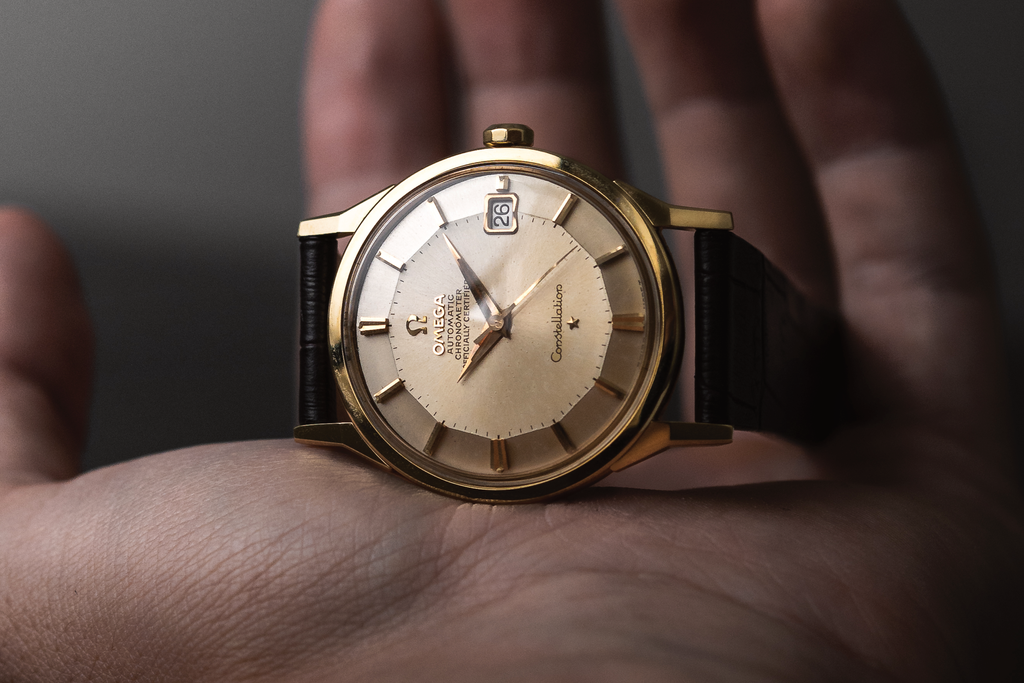
reference
During these first few years, Omega actually used several different numbering systems.
Before 1962, it was 4 digits From 1962 to 1988 it was classified using the more modern 3-digit dotted 3-digit system.[ 5-6 ]
So here is a list of some of the more common references to the pie plate era*
| References | Year | Dial | index | date | Rugs | variation | |
|---|---|---|---|---|---|---|---|
| 2852 | 1952-62 | Shaved pan/12 no corners | wedge |
× |
usually | Honeycomb dial, 3-6-9-12 numbers only | |
| 2943 | 1958-62 | Shaved pan/12 no corners | Onyx Bar | ○ | usually | Normal dial | |
| 14381 | 1958-62 | Shaved pan/12 corners | bar | × | Dogleg | Flat Dial | |
| 14393 | 1958-62 | Shaved pan/12 corners | bar | ○ | Dogleg | Flat Dial | |
| 167.005 | 1962-70 a | Shaved pan/12 corners | bar | × | Dogleg |
.002 Grand Luxe .004 Short Lug .010 GP (gold plated) |
|
| 167.008 | 1962-70 a | Shaved pan/12 corners | bar | ○ | Dogleg | Normal dial | |
Table 1. List of common Omega Constellations from the "Pie Pan dial" era, their main design features and variations. 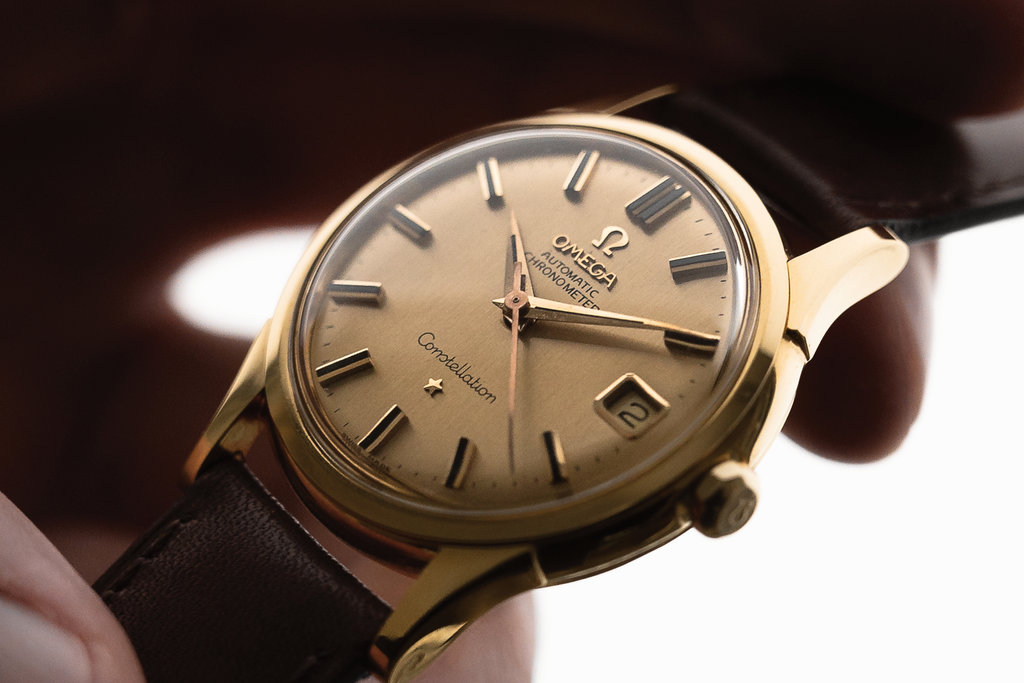
As you can see, not all watches that fall under the Pie Pan dial series feature a pronounced Pie Pan dial.
This ref. 14393 features a flat dial.
The first generation was the model with a pie-pan dial, which was created in 1952, while the model with a flat dial is classified as the second generation.
Numbers
Here we can see this design typology and its characteristics in more detail.
Using data from over 500 Constellation watches sold by OMEGA to date, we can estimate the percentage of these models produced across all variations.
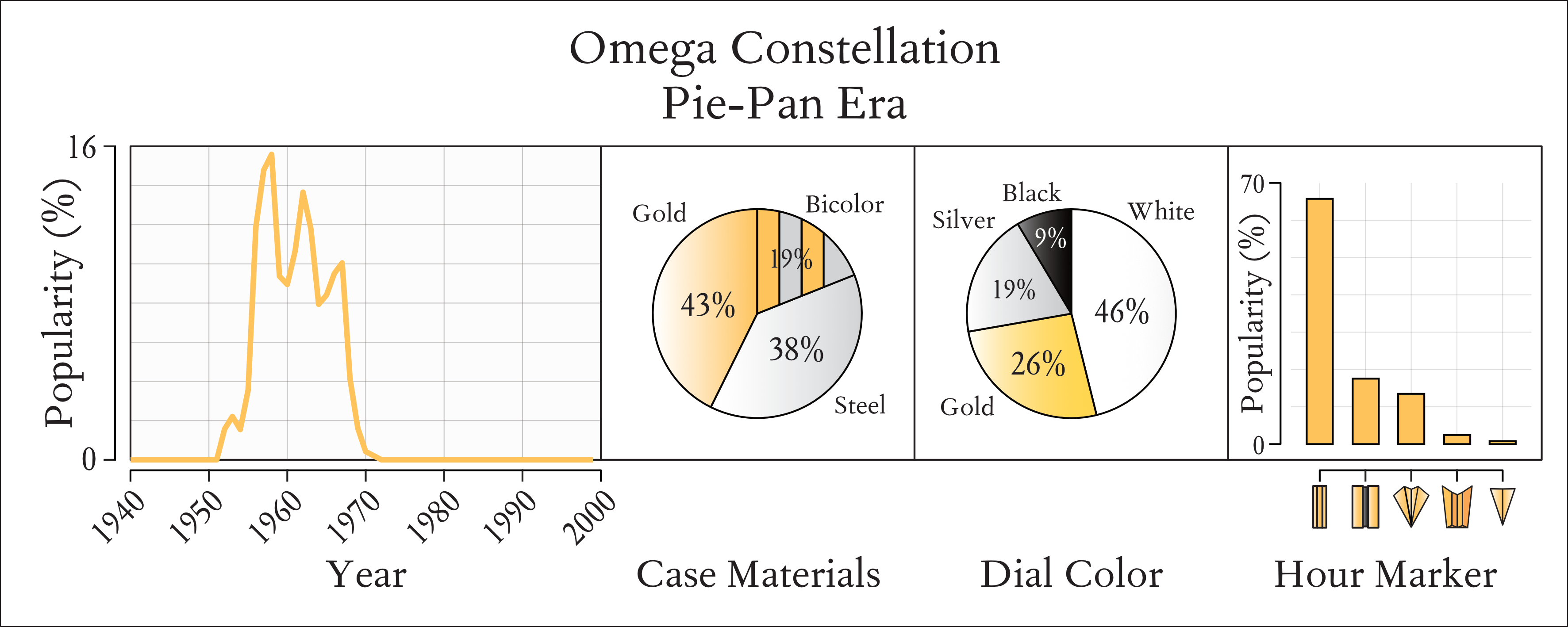
Figure 1. A quantitative guide to the Omega Constellation Pie Pan, showing its relative popularity across Omega watches of the time (left), case material (middle left), dial color (middle right), and hour markers (right).
The Pie Pan dial era lasted for approximately 20 years after production began.
To see how common these Constellations were compared to other Omega watches, especially with the introduction of the date complication in 1958, their number rose to around 15% of all Omega watches at the time.
Overall, the Pie Pan dial was most popular from the late 1950s to the mid-1960s.
Material and color
From the very beginning, OMEGA's vision for the Constellation collection was to produce luxury mechanical watches for enthusiasts.
This becomes even clearer when we take a closer look at the applied materials.
Most of the pieces (43%) are made of gold, 19% are gold-capped or bicolor, and 38% are made of steel.
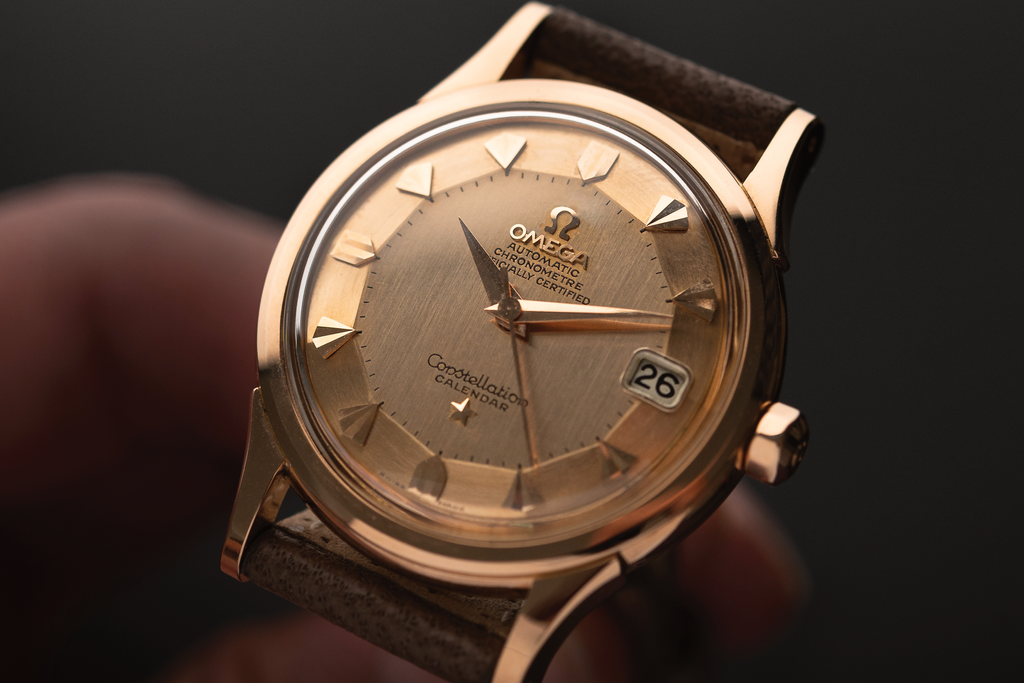
Pictured above is a top of the line 1950s Constellation.
1958 Constellation 2943 gold dial and gold case.
The dial is perfectly satin-finished, with a central seconds hand and playful wedge-shaped indexes.
The same goes for the dial color.
White is by far the most popular dial color at 46%, while gold and silver dials make up 26% and 19% respectively.
Regardless of the color option, gold is often used on the hands and hour hands, further enhancing the luxury and warm hues of these early references.
summary
The Pie Pan dial Constellation is a true classic from the late 1950s and early 1960s, and it captures much of the zeitgeist of that time.
Originally conceived as a challenger to the Rolex Datejust, this model has become a success story of its own.
Modern watches may be more accurate than the original Constellation, but nothing beats the history that began with this one prototype.
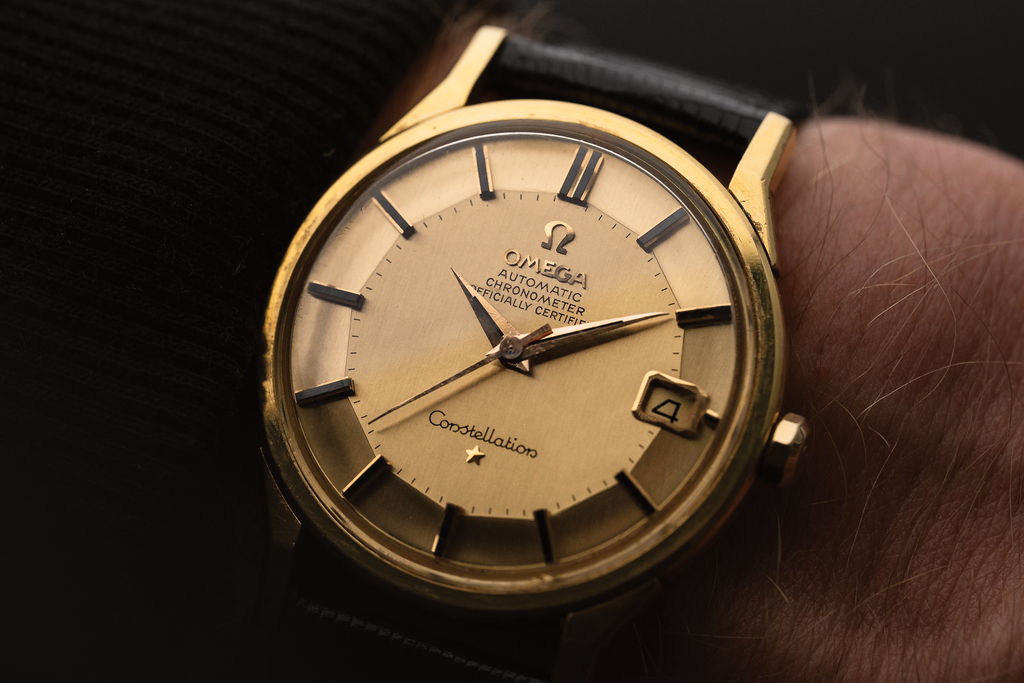
The bottom line is...there is probably no other mid-20th century, or (vintage) watch in general that is more versatile and adaptable.
You can always dress it up or down.
Photo: Constellation 168.005
References
[1] Omega Constellation Pie-Pan 1963 - History & Design; Felix Goldammer, Goldammer Vintage Watches;
[2] A History Of The Omega Constellation; Jack Forster, Hodinkee;
[3] In-Depth - Vintage Omega Constellation Watches; Robert-Jan Broer, Fratello;
https://www.fratellowatches.com/omega-constellation-watches/
[4] The Omega Constellation Buying Guide; Time & Tide Watches;
https://timeandtidewatches.com/omega-constellation-buying-guide/
[5] How to Identify a Vintage Omega; Michal Kolwas, Waha Watches;
https://wahawatches.com/how-to-identify-a-vintage-omega-2019/
[6] An Overview of Omega Reference Codes for Wristwatches; Old-Omegas;
http://www.old-omegas.com/omrefcod.html
And thanks to the almost endless archives, Omega Constellation Collectors and the Collector's Square .



